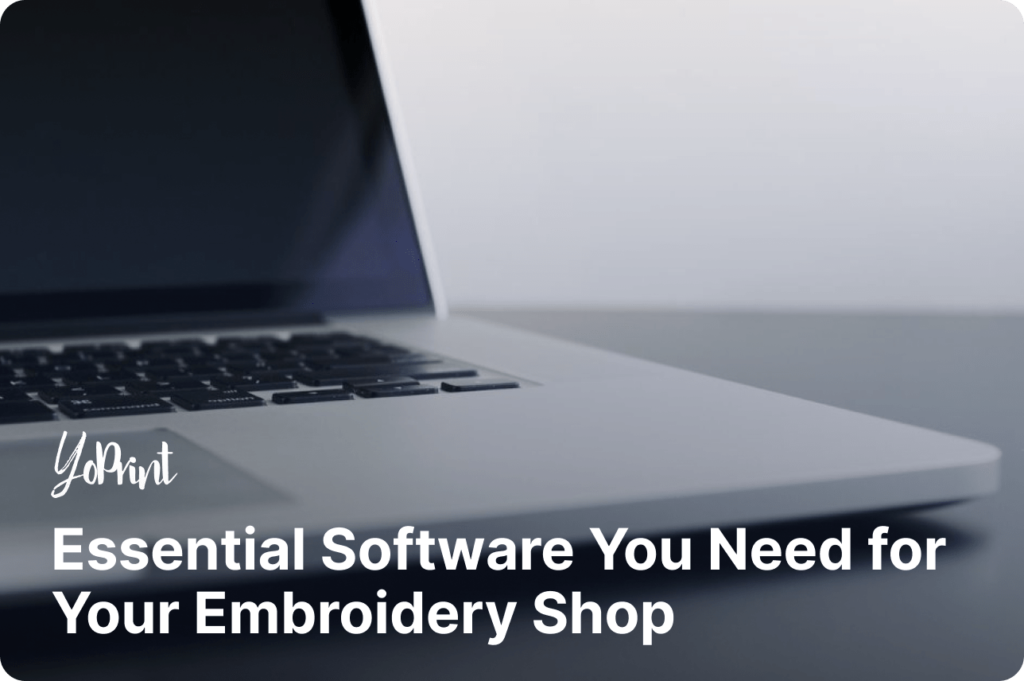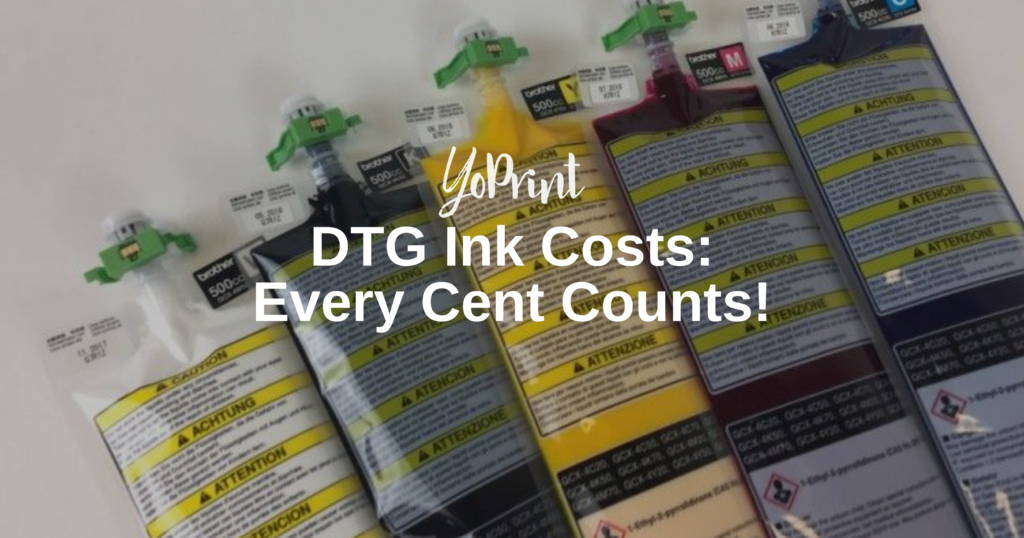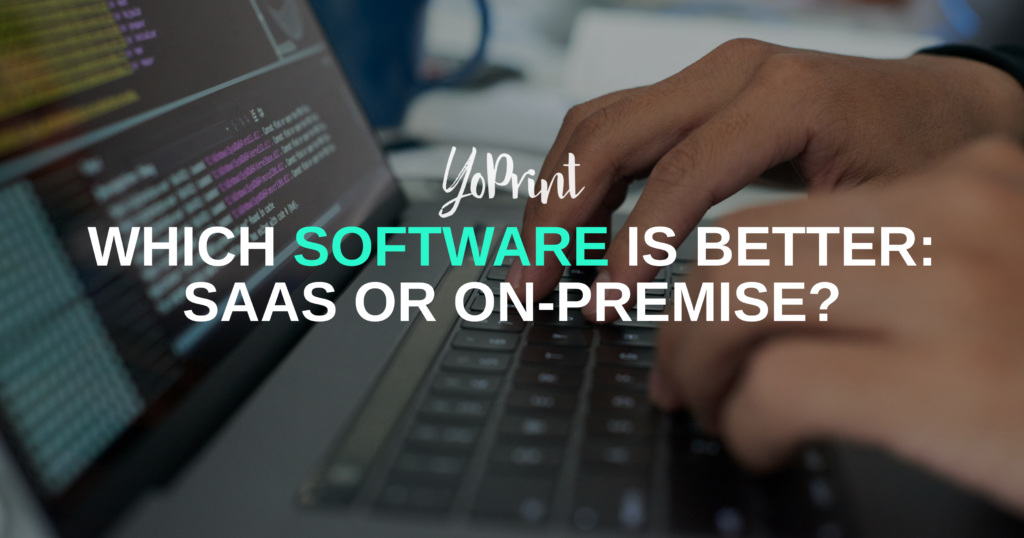If you’re getting into embroidery and want to do it on your own terms, you definitely need to learn how to use digitizing software to create the designs your customers want before you embroider them. But digitizing software isn’t the only thing you’ll need to run a successful embroidery business. You can say goodbye to paper trails with the plentiful options available to help you track orders and effectively manage your shop with little to no hassle.
As such, this guide will help you identify all the essential software you need for your embroidery shop, allowing you to run a tight ship and make excellent profits simultaneously.
Embroidery Digitizing Software
We’ve gone into detail about digitizing in our previous article, where you translate digital artwork into instructions the embroidery machine can use to create the design. With plenty of options to choose from, you need to know what to look for in digitizing software before you make an informed decision.
Supported File Formats
It’s no secret that all embroidery machines are built differently, even if they perform the same functions. Of particular note are the file formats that each machine can support. There are three file format types you should know about:
- Expanded file formats: Common commercial embroidery machine formats, consisting mainly of x and y-axis movements and commands the machine will follow. File formats include Tajima’s .dst format and Melco’s .exp format.
- Machine file formats: These formats are specific to different embroidery machine brands and provide commands for machines to embroider a design. Different brands will have different file formats that aren’t compatible with one another.
- Native file formats: These are only readable by embroidery digitizing software. You’ll use these to edit your designs and then convert them to either machine or expanded file formats for the machines to embroider the design.
You must ensure the software you’re considering has a wide range of file formats supported depending on the embroidery machines you currently have in the shop. If you need to replace your older machines with newer ones from another brand, you’ll still be able to convert your designs into a file format the new machines can accept.
Available Support

In case you run into trouble while using the software, readily available tech support can be very beneficial. Whether it might be training you and your staff on how to use the software or troubleshooting various issues that may arise, having that support be reachable at a call can ensure you don’t lose any productivity from unexpected downtime. There are also plenty of free video tutorials you can find on YouTube, but you might not necessarily find the solution you need; it’d be better to refer to an expert.
Functionality
With plenty of software to pick from, each of them will inevitably share a few similarities in terms of features. Among this list, you might note how some of them will find unique ways to stand out from the crowd, from offering unique modules only available to that particular software brand to streamlined processes that make it easier to create your designs.
Ease of Use
Equally important is whether the software is easy to use. A tidy interface, useful tooltips for specific functions, and easy-to-read documentation can make it much easier for you and your team to familiarize yourself with the software and everything it can do for your shop.
What Options are Available to You?
Several free and paid options from various providers are available for your digitizing needs, and we’ll cover a few of the more popular ones in this article.
Wilcom Hatch
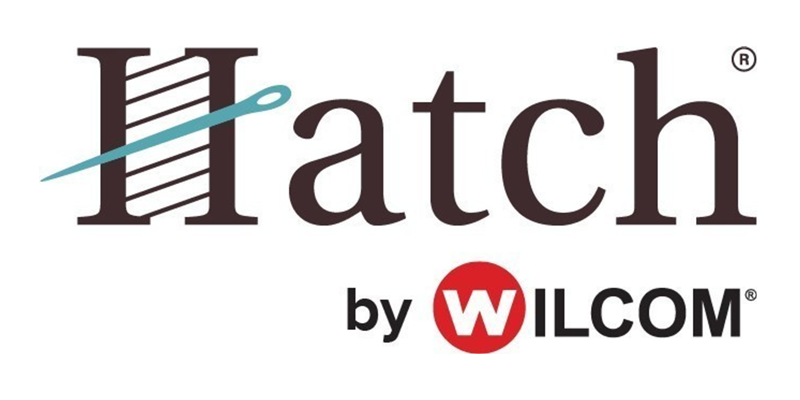
Endorsed by award-winning digitizer John Deer, Wilcom’s Hatch software is a versatile suite of digitizing tools for newcomers and expert digitizers. Offered in four different suites, the core of Hatch is its top-tier Digitizer 3 suite. Touted as the most “advanced embroidery digitizing software available,” Hatch prides itself on its easy-to-use nature, powerful toolset, and extensive support and training available. Its target audience is the home and small-scale embroidery market.
Its key features revolve around making it easy for anyone to digitize any artwork into amazing embroidery designs. You’ll be able to edit pre-existing designs and effortlessly convert bitmap and vector art into embroidery, with various suggestions the software provides to make it look good. The software also supports a variety of decorative embroidery methods, as well, such as monograms, applique, and hand stitching. You also have 124 custom-made fonts to choose from to create unique embroidered lettering.
There’s also the Color PhotoStitch function available, allowing you to transform photographs into beautiful embroidery art, thanks to “improved color processing” that simulates photographic quality in embroidered form.
Hatch also supports several add-ons that can be purchased separately. The CorelDRAW GEM, for example, allows you to create custom artwork and then import it into Hatch for digitizing. There’s also an add-on for simulating hand cross-stitches, either by creating one of your own or importing an existing design.
Pros: Great support and education channels; easy-to-use interface; powerful tools for home embroidery
Cons: Can get pricey, especially with the add-ons
Wilcom EmbroideryStudio e4.5
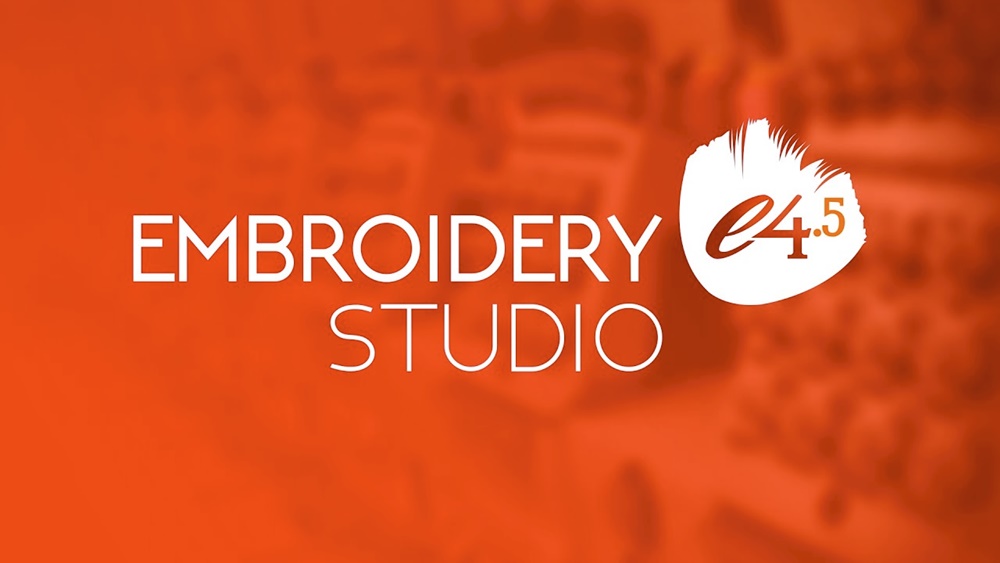
Wilcom also has other solutions available, such as the EmbroideryStudio e4.5. Where Hatch is designed for home embroiderers, EmbroideryStudio caters to commercial embroiderers who need more powerful tools for managing orders and creating top-notch designs. Also available in four different suites (Lettering, Editing, Decorating, and Designing), EmbroideryStudio confidently boasts that it’s the “new standard for custom embroidery shops and apparel decorators expanding into embroidery.”
EmbroideryStudio aims to make it easier for you to handle all your custom embroidery orders and create memorable designs your clients will love. As such, you can create mock-ups of designs, print or email approvals for customers to review, and easily track all orders in a well-integrated, automatically-indexed library system. All of this comes together to help you get a good overview of your business, ensure customers are in the loop with every change to their orders, and ultimately boost sales and productivity.
EmbroideryStudio also has plenty of digitizing tools to help you create, edit and digitize artwork into embroidery. The software supports numerous unique stitching styles, such as radial stitch effects and double tatami underlays, and also supports 200 professionally crafted embroidery fonts for lettering – you could also write in Arabic and Thai languages, too!
On the top-tier Designing tier, you get more tools to work with: improved auto-digitizing with an interactive dialog, streamlined functions to make it easier to digitize, and a variety of additional Elements (which comes standard for Designing and Decorating) – one of which was Kiosk mode, which enables fast and easy personalization for “consumer garments and merchandise without the need to train staff to use complex digitizing systems.”
The Designing tier also comes bundled with the latest CorelDRAW® Graphics Suite, allowing users to create and edit vector and bitmap graphic designs.
- Pros: Powerful digitizing tools; streamlined processes; platforms for managing customer orders and approvals; useful add-ons available
- Cons: The priciest of Wilcom’s offerings; not ideal for new or learning digitizers
Embrilliance
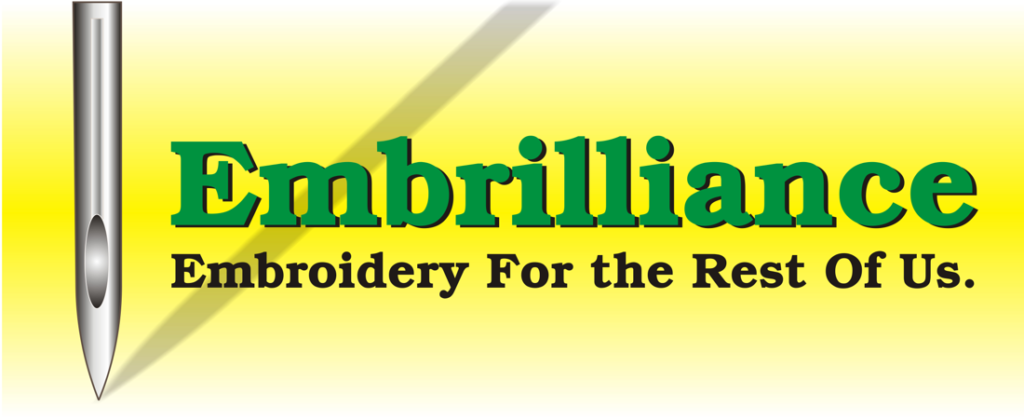
Another competitive choice, Embrilliance offers two different types of software: Essentials, which offers a basic suite of viewing, managing, and customizing embroidery, and StitchArtist, which allows you to create your own embroidery designs.
As the name suggests, the Essentials software is the base for allowing you to work with embroidery designs. The principle behind Essentials is that anyone who wants to digitize should be able to do it without needing to pay for software that costs “an arm and a leg.” For the price of $149.95 (as of writing, it’s on offer for $139 until February 12th), you’ll be able to make all the adjustments you need to your embroidery designs: merge designs, resize them and their stitch counts, easily add lettering, and save designs into a wide variety of machine file formats.
StitchArtist, on the other hand, is available at three different tiers: Level 1 is for hobby embroiderers; Level 2’s for intermediate-level digitizers; and Level 3 is well-suited for professional digitizers. StitchArtist is neither a “photo-to-stitch tool” nor is it “an auto-digitizing program.” You’ll start with “existing artwork or by ‘drawing with stitches’” to create your designs, and depending on the level of StitchArtist, you can “draw, set stitches, size, edit, rotate, sequence and set properties of design objects” and more.
Used in tandem, the Embrilliance Platform offers powerful, versatile, and affordable software for anyone who wants to digitize, whatever their level of digitizing may be.
- Pros: Affordable yet powerful toolset; relatively easy to use; plenty of functions; lots of helpful resources
- Cons: Still a learning curve to get used to
Ink/Stitch
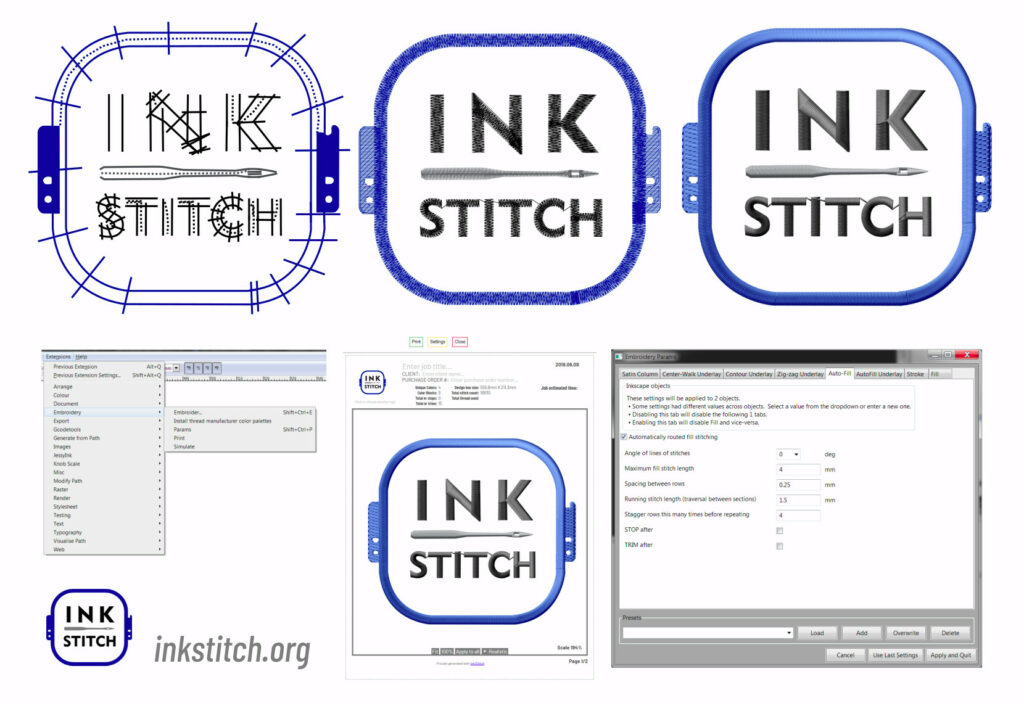
Ink/Stitch is a free, open-source “cross-platform embroidery digitizing platform” for Inkscape, which is an open-source graphics editor. This is a free but nonetheless powerful option for embroidery designing that’s updated with help from the open-source community. Being an open-source software means anyone with programming experience can easily contribute to its development and the programming library for the “reading and writing of embroidery files.”
The many features that Ink/Stitch have are just as extensive as the others on this list and is constantly evolving as new improvements are slowly introduced. In its current form (last updated in July 2022), Ink/Stitch allows you to use various stitch types – ripple stitches being a new addition – as well as thread and color management, easy previews, and compatibility with many different file formats.
Their website also has an extensive user manual that is useful for users who’d like to learn more about how to use Ink/Stitch best. If you have programming knowledge, you can also help contribute to the software’s development.
- Pros: Free to use; just as feature-filled as professional software; anyone can contribute to its development
- Cons: Learning curve, especially if you’ve never used Inkscape before; may still be missing features that you’re familiar with
Accounting and Bookkeeping
Keeping track of all your orders can become messy if you don’t sort things properly. Take the hassle out of your accounting and bookkeeping with useful software that automates everything for you – say goodbye to confusing (and easy to lose) paper trails!
Quickbooks
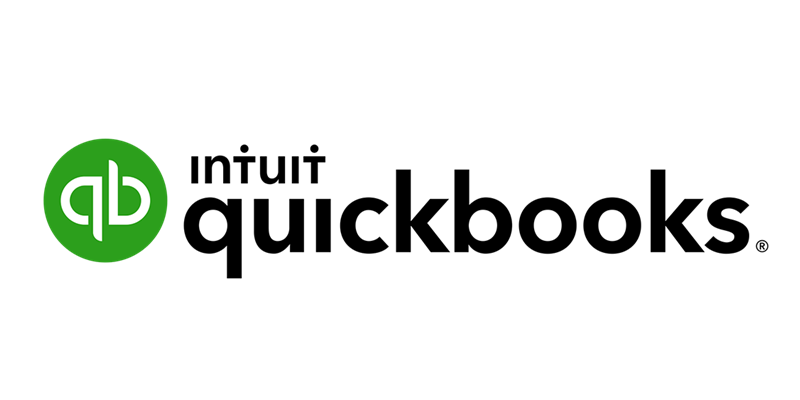
Quickbooks is a suite of accounting, bookkeeping, and financial solutions for businesses to stay ahead of bills, expenses, customer orders, and the like. Whether you’re a new embroidery business or run a successful one, or even if you’re a digitizing freelancer, Quickbooks will cover your bases and make handling all your financial commitments much easier.
Because of the varied options you have to organize your business, you won’t need to subscribe to every single module that Quickbooks offers. If some meet your business needs and others don’t, you only need to prioritize (and pay for) the ones that matter to you. Whichever modules you choose, you’ll easily see how Quickbooks automatically and effortlessly integrates your business with your bank accounts and keeps you ahead of your overall cash flow.
Some of the functionalities that Quickbooks has to offer include:
- Easy access to financial statements
- Ensures prompt payments to and from vendors/customers
- Calculate all expenses and associated taxes
- Know where your cash is going
- Gain useful financial and accounting insights from your business
- Better manage your payrolls and bookkeeping
Quickbooks is available in two forms: Quickbooks Desktop, tailored for medium-to-large scale businesses, and Quickbooks Online, an online SaaS (software as a service) model best suited for small-to-medium businesses with “flexible, comprehensive tools on the go, anytime, anywhere.”
- Pros: Options for any kind of business; effective financial management; easier to keep track of every aspect of your business; robust integrations
- Cons: Can be a little overwhelming at first; top-tier features locked behind expensive paywalls
Handling Shipping
Moving your products to customers can also be time-consuming, especially if you’re trying to reach them promptly and at a reasonable rate if they live in another state or country. Let these shipping providers help you while maximizing savings and keeping deliveries timely.
ShippingEasy
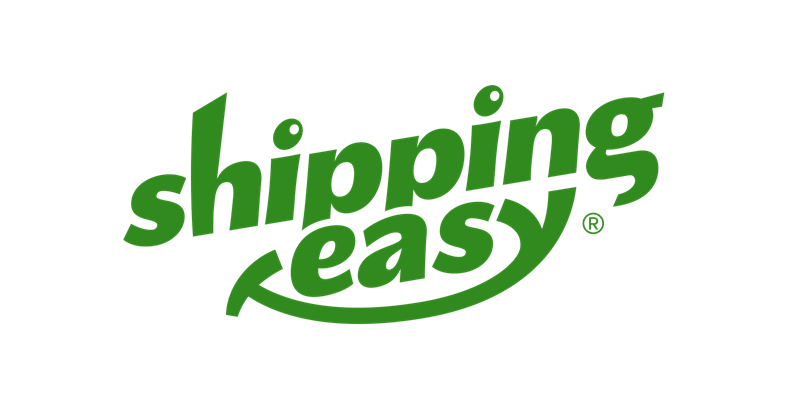
Offering integration with 50 partners such as UPS, FedEx, and even Shopify and Etsy, ShippingEasy prides itself on providing the “easiest way to ship online.” Using an online SaaS model, ShippingEasy – much like its name – easily simplifies your shipping needs by automating the process, tracking your orders, preparing and printing your shipping labels, as well as easing the return process for items.
Of particular interest is their ability to offer USPS Commercial Rates, “guaranteed lowest shipping rates,” regardless of the shipment size, on top of other discounts on various rates and insurance fees for shipping, and even save you from “certain surcharges.” While it’s exclusively available for “customers shipping >50K per annum,” high-volume businesses would want to leverage that and save more on shipping each year.
ShippingEasy also provides “everyday low pricing for shipping” thanks to their exclusive Flat Rate Green pricing for shipments “between 2 lbs and less than 20 lbs.” This also entitles your business to the “lowest pricing on Priority Mail items” where applicable.
- Pros: Automated shipping mechanisms; lower shipping rates; integrations with prominent industry players like Amazon and Etsy; relatively affordable premium plan
- Cons: Some reports of syncing problems and other bug-related issues; the basic plan is ideal only for small-scale businesses
Shippo
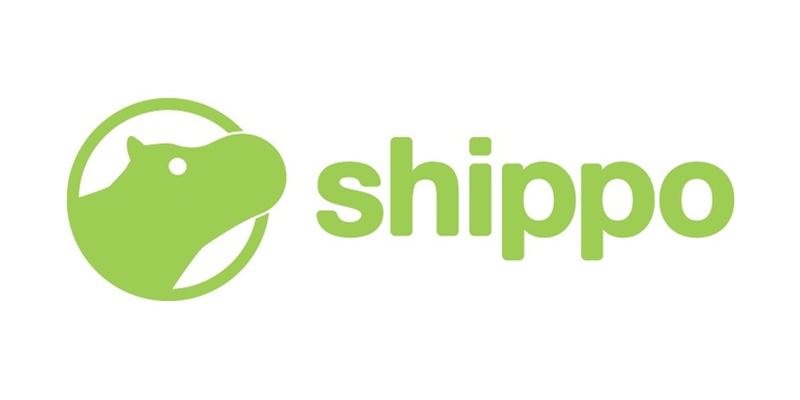
With more than a hundred million shipments annually, Shippo is another popular online shipping platform with plenty of integrations and useful features. With three service tiers to choose from (Starter, Professional, and Premier), Shippo aims to provide a hassle-free shipping experience from start to finish. In 2022, they partnered with Shopify to provide “an end-to-end shipping solution as well as best-in-class carrier rates to Shopify merchants” directly from Shopify.
Much like ShippingEasy, Shippo offers many helpful services such as attractive shipping rates, integration for tracking orders and customer/merchant information, scheduling and returns, as well as customized shipping labels and other options. They also provide you with accurate tracking information for your shipments, even those “created outside of Shippo,” so you’ll know where they are in real time.
Shippo also offers insurance coverage on shipments, safeguarding your business from lost or damaged packages. Featuring a paperless claims process, low premium rates and shipping to any label, you’ll be able to give your customers peace of mind once their products are shipped out.
- Pros: Strong integration network; plentiful features; easily accessible API for your business needs; affordable monthly rates
- Cons: None
Where YoPrint Comes In
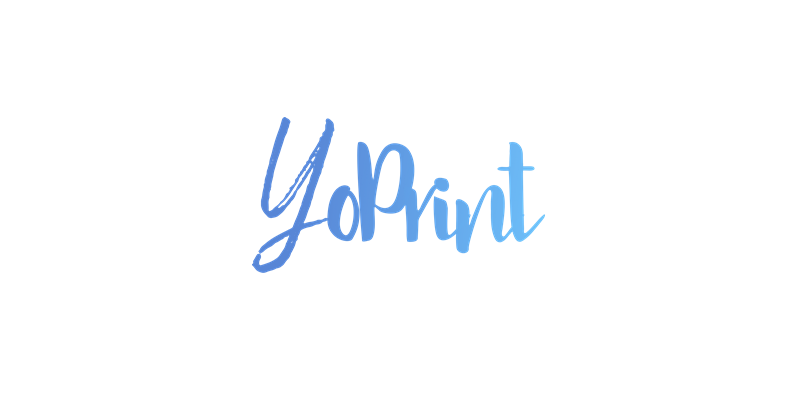
With all that said and done, how does YoPrint fit into the picture? While you might have all the software you need to run your business, accessing separate web applications or software to handle everything can feel overwhelming. With YoPrint, you’ll be able to streamline your business operations and manage your customer’s orders stress-free while making sure you’re maximizing productivity and profits.
Easy Order Management
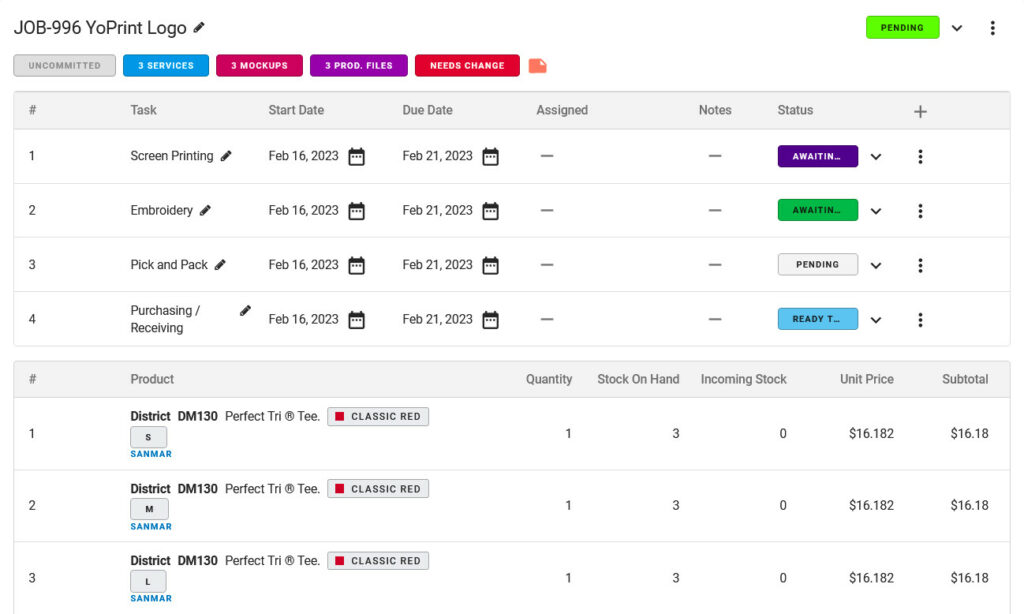
YoPrint’s order management functions provide you with everything you need to easily track every order you receive and retrieve that information whenever you need it. Big embroidery order for a 15,000-stitch emblem and nametag on corporate shirts? No worries: everything – from the threads you’ll use to the stitch techniques required – can be recorded, and your digitizers and embroiderers can check the details whenever needed. You can save them as job presets, so you don’t need to type them repeatedly whenever you get repeat orders.
That’s not all. You can also set up various pricing matrices, so your regular customers can enjoy a preferential rate, while rush jobs will pay at a higher price point. All of these can be preset in advance, allowing you to pick the right pricing matrix for the right customer in no time. You can also set up different sales tax amounts for various requirements, ensuring you’ll never get your tax calculations wrong.
Shipping is also a streamlined process. You can prepare multiple shipments for a single invoice, even if your customer might have multiple warehouses to which you need to ship. There is no need for separate shipments and invoices to complicate the tracking or bookkeeping process. All the automation YoPrint makes available allows you to spend less time planning and prepping on the computer and more time fulfilling your customers’ orders.
Manage Your Production Workflows
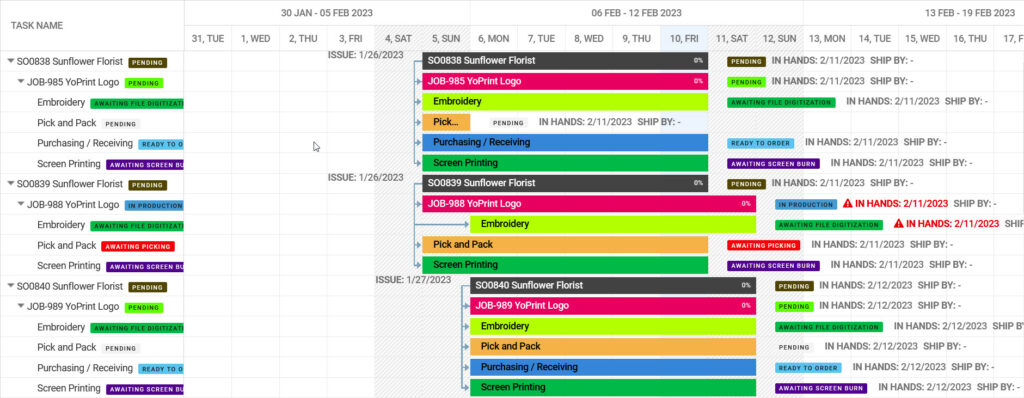
With so many orders to keep track of, you might think that it’s going to be nigh impossible to remember everything. YoPrint frees you from that stress by providing you with planning and scheduling tools to keep your production on track. You can view all your pending and completed orders in itemized lists and even have filter lists set up to let you, for example, view your rush jobs that have yet to be completed. You can even edit items in the list if there are adjustments to be made, such as changes in the due date or a price reduction for a special case.
You’ll also find a calendar or Gantt chart view handy in arranging your production schedules. Need to change an order’s due date? Just drag and drop it to the new due date. You can also edit order details from here, too; no need to navigate to separate menus to make a simple amendment. Plus, there are also filters you can use to look for particular orders.
The best part is that you’ll also be able to assign tasks to your staff, so everyone knows what they need to do: Sam and Ellie digitizing artwork; Jan and the Shipping team handling all shipping-related tasks. No miscommunications, no confusion, just maximum productivity. You can customize your workflows by setting up job statuses in varying combinations. For example, you might have the following setup for your embroidery workflow:
Pending > Preparing Artwork > Digitizing > Test Run > Embroidering > Shipping > Completed
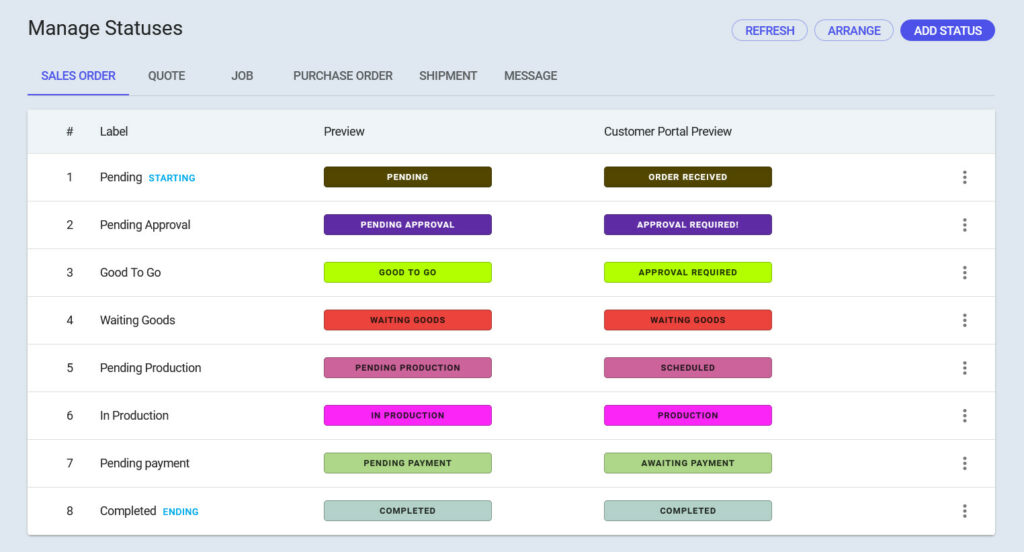
As your staff finishes each step, they’ll be able to set the status accordingly for the next person to follow up. It’s much easier to go from start to finish when everyone’s in the loop with each order you receive.
Keep Track of Inventory
What about your inventory? YoPrint has you covered, too. You’ll be able to track your inventory movement in real time, no matter where you store them. In fact, YoPrint can automatically keep count for you. And if you need to have a stock take to ascertain your stock levels, you can adjust your numbers in real time. All of this will be reflected in your pending orders, too: you’ll get up-to-date numbers for specific items needed in specific orders, ensuring you’re always ahead in your inventory.
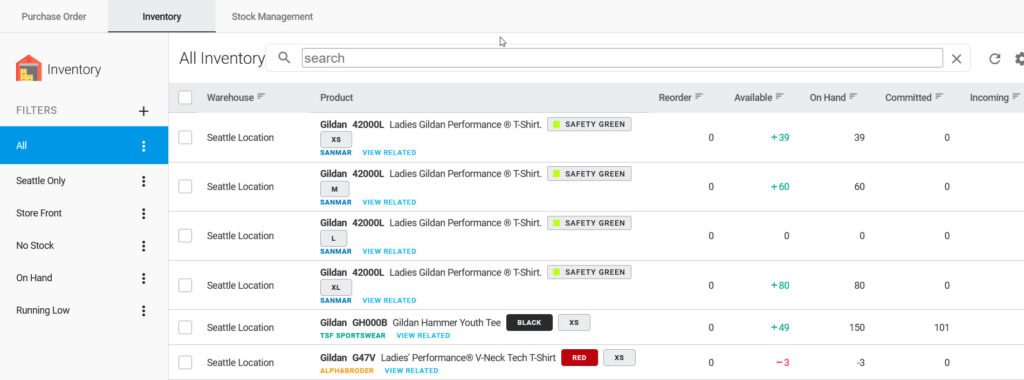
Communicating with your vendors is also simplified when you need to replenish your stocks, thanks to YoPrint. Easily share purchase orders with them, have direct communication through YoPrint itself, and have barcodes handy to provide all the information you or the vendor needs in record time. It’s also super easy to keep track of every stock order you place.
Prioritize Customer Satisfaction
Customer service can make or break a business; after all, a happy customer will return to do more business with you. YoPrint allows you to set up a unique customer portal that gives your customers that personalized touch. Through this portal, your customers can track their orders’ progress and directly contact you through the integrated communication system. They’ll be able to view all their past and current orders and all pending approvals for all their current orders.
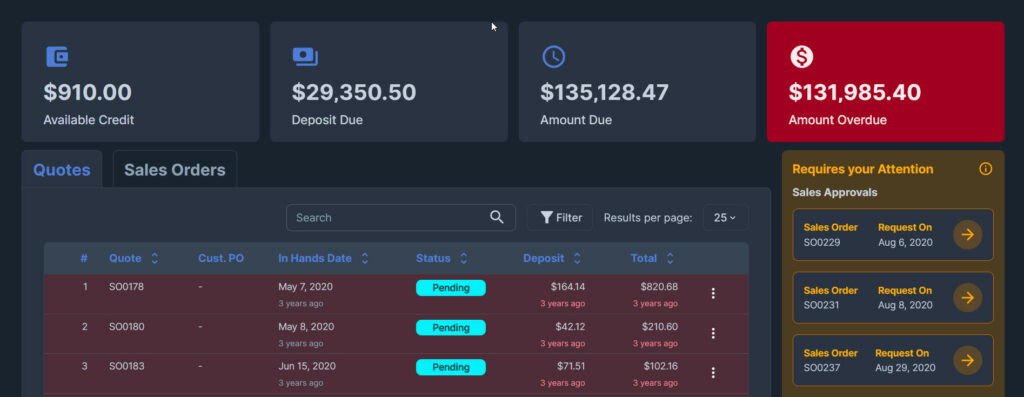
Any time you send a quote to your customers for review, they only need to approve it from the portal. If changes need to be made, they can request these changes. The same applies to the artwork: they can approve or reject all artwork for that order. They can even leave comments, too!
The customer portal is a highly versatile platform that gives your customers all the information they need to know: payment due dates, shipping, order statuses, and so on. Payments can also be made through the portal either by card, Paypal, Stripe, or Square.
Effortless Integrations
YoPrint’s integrations make it easy for you to manage plenty of facets of your business: product catalog integrations allow you to get real-time stock and pricing from various brands like SanMar and S&S, while Paypal, Stripe, and Square integrations allow your customers to pay with these via the customer portal. You can even connect your Quickbooks account to sync your sales orders and turn them into invoices.
Conclusion
With the right software in place, you’ll be able to take your business further, improve your profit margins, and maximize productivity all at once. Simplifying your workflows with software means more time can be spent strategizing new business plans and building stronger customer relationships, all of which can come together in future-proofing your business.
